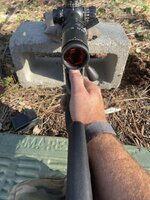When it comes to “position” there are numerous variables and “ways” to shoot.
There are lots of ways that work, but they might be a “cheat” that works prone with a bipod like loading forward hard to trap the rifle. But, you can’t trap the same way on a tripod. And, bench rear shooters want the rifle to recoil and slide back over the front and rear rest. Heavy PRS rifles with brakes and light recoiling cartridges can be free recoiled off barricades.
So, the best thing is to learn the principles and then apply techniques to your rifle, cartridge, and position.
The principles I think of in every shooting position are:
1: recoil starts when the firing pin falls, so freeze all movement, including the trigger finger, because a brake or suppressor doesn’t start to mitigate recoil until the bullet leaves the barrel.
2: recoil travels the path of least resistance, angles and anything touching the rifle influences the direction the rifle moves.
3: a right twist rifle will twist to the left, so block torque that wants to travel that way
4: anything touching the rifle is part of the rifle system and needs to be considered how it will affect the movement of recoil
5: focus the rifle system to absorb recoil in a direct line rearward, eliminating any movement or potential for bounce or push not directly in line with the bore
6: control the rifle as it rebounds forward
7: get as much body weight in front of the rifle, and relax like a bag of meat to absorb the recoil, don’t be like a stiff steel block that makes the rifle bounce
8: use minimum amount of force necessary to control the rifle, gripping and pulling the rifle into your shoulder hard will lead to unintended movement as your muscles are under more tension and contraction.
The advice for a neutral thumb can be analyzed with the principles. In PRS the thumb can rest on the side because of free recoil techniques with a low recoiling rifle system. That is the least amount of influence.
But, a higher recoiling hunting rifle it can’t be free recoiled. So, a thumb on top is best, because it is inline with the bore to control the rifle movement. And, it is more isolated from the trigger finger so you can get a clean press at 90 degrees.
I have found that different positions create different influences on the rifle, and if I don’t practice them, I can control my rifle. So, I nearly exclusively shoot off my tripod in the field and practice it.










